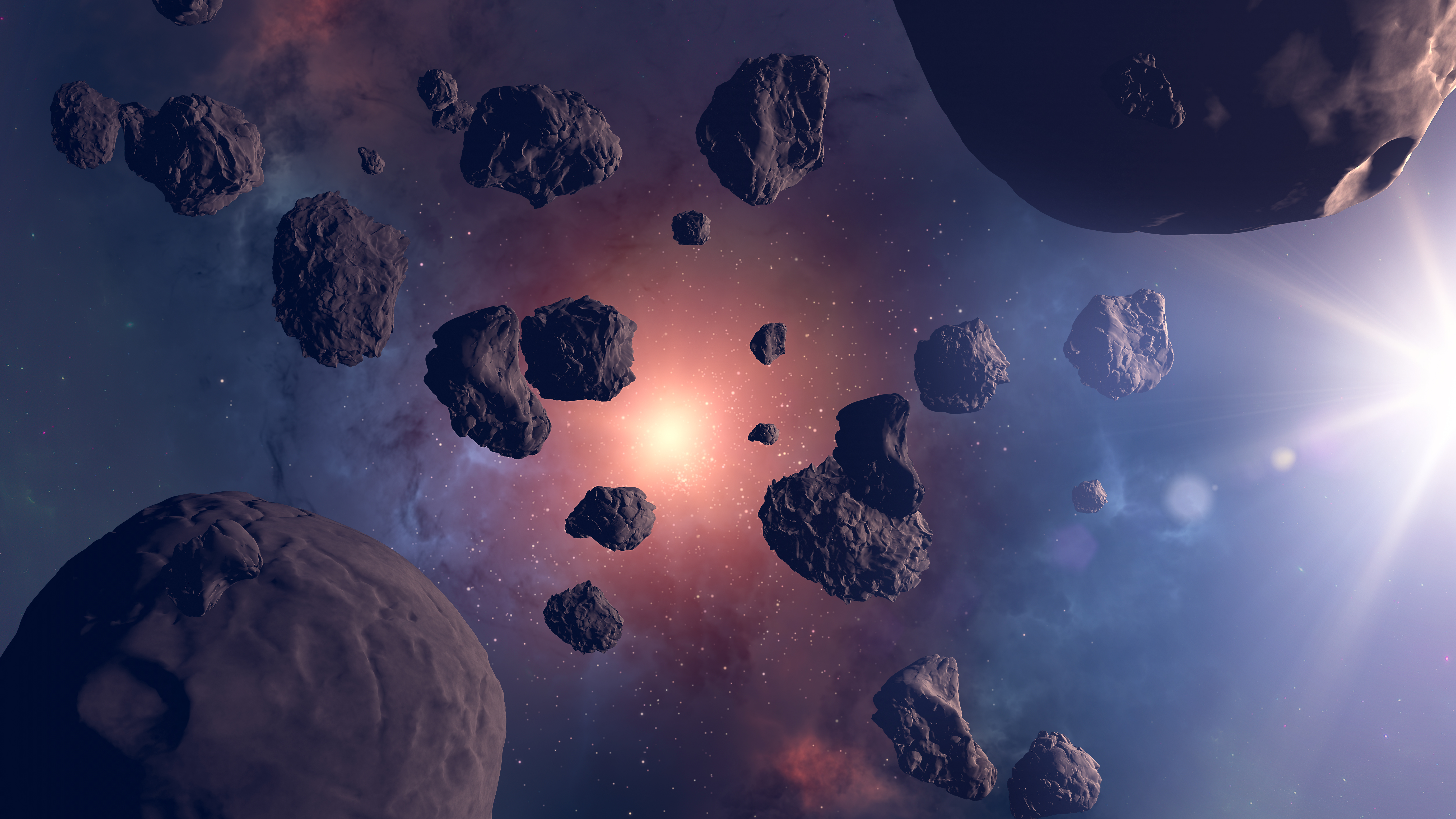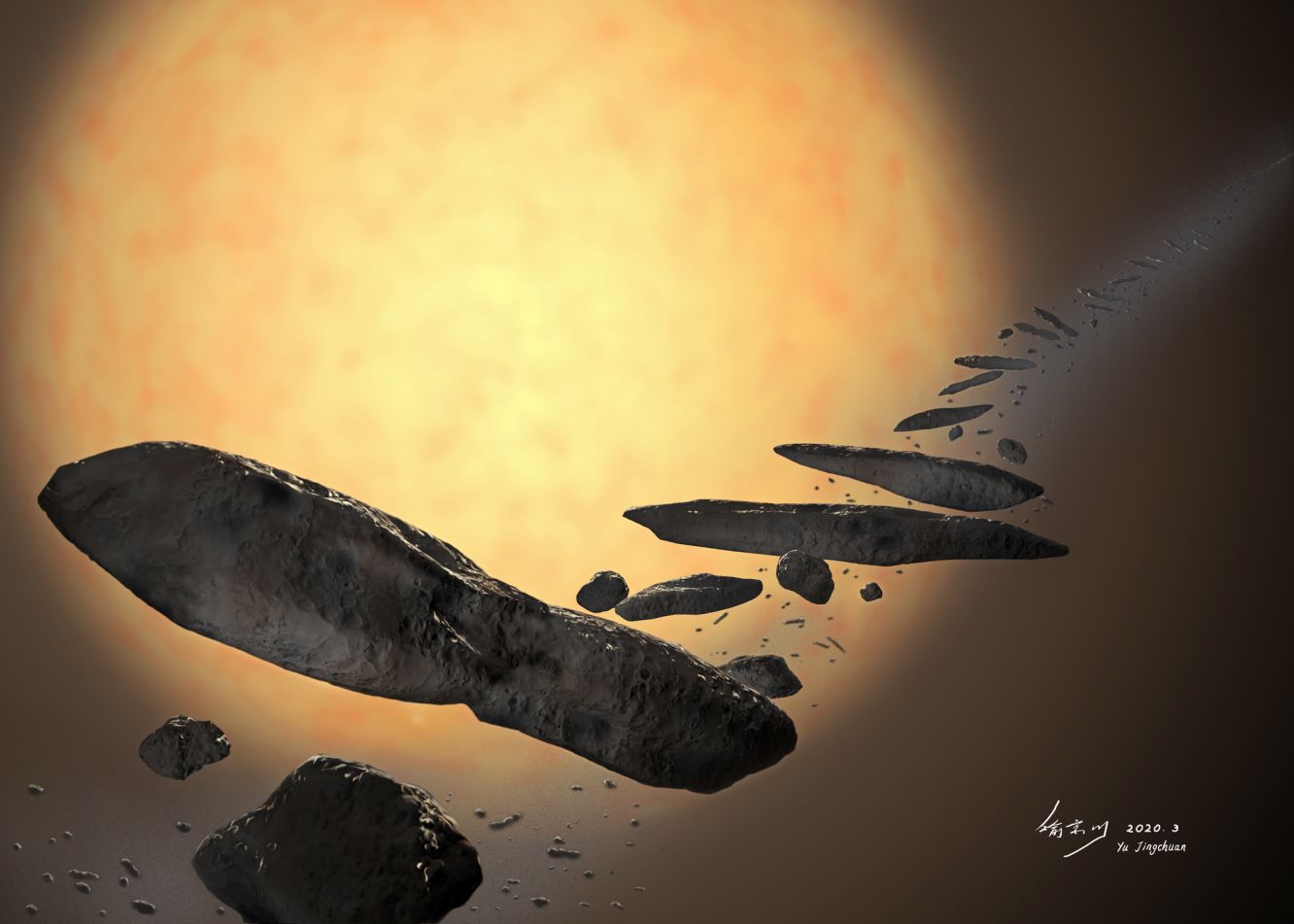Earth may have debris from alien star systems trapped in its orbit, new research suggests
A new study questions if our planet could capture rocky and icy visitors from outside the solar system — and how scientists could spot them.

Astronomers have found that renegade objects from alien star systems could be captured by Earth's gravity and linger in orbit around our planet for potentially millions of years. However, most of these objects would likely be too small to detect with current telescopes, according to a new study published May 17 on the preprint server arXiv.
"Objects entering the solar system from the interstellar space outside of it can be trapped into bound orbits around the sun as a result of a close passage to Jupiter," co-author Avi Loeb, a professor of physics at Harvard University, told Live Science in an email. "We investigate the possibility that some of them are captured and become Near-Earth Objects (NEOs)."
Related: Are aliens real?
These "interstellar interlopers," as the team calls them, would take the form of icy rocks jettisoned from their home star systems before taking up residence in ours. However, Loeb and his colleagues do not rule out the possibility that objects crafted by intelligent aliens could end up in our solar system as well.
Intruders in our solar system
Interstellar visitors have been of great interest to astronomers since 2017, when the first "intruder" space rock — a cigar-shaped object called 'Oumuamua — was discovered in our cosmic backyard.
'Oumuamua's 1,300-foot-long (400 meters), highly elongated shape makes it around 10 times as long as it is wide, setting it apart from any known asteroids or comets native to our solar system. After observing the javelin-like space rock further, scientists concluded that it had been wandering our galaxy, unassociated with any star system, for hundreds of millions of years before its chance encounter with the solar system.
A renewed search for interstellar objects soon turned up a second object, the rogue comet Borisov — an Eiffel Tower-size ball of ice and dust from outside the solar system discovered in 2019.
Get the world’s most fascinating discoveries delivered straight to your inbox.
Neither 'Oumuamua nor Borisov is bound to the sun, meaning both objects will eventually exit the solar system as capriciously as they entered it, with the cigar-shaped object already fleeing beyond the orbit of Neptune. In their new paper, the study authors investigated whether other interstellar bodies could be caught by the gravity of the sun, or even the planets, and thus be forced to remain in the solar system.
Previous attempts to study this idea have focused on capture by the sun and Jupiter system. For the new study, the researchers set about investigating if Earth could also capture interstellar visitors and hold on to them as NEOs.
Using numerical simulations, the team found that it is possible for Earth to periodically capture interstellar objects in its orbit. However, the effect is small compared with that of Jupiter, which is roughly a thousand times more efficient at catching interstellar objects than Earth is.
Additionally, the researchers found that any objects caught by Earth’s gravity would be unstable and would survive around our planet for a shorter time than currently known NEOs do. Eventually, these objects would be disturbed by interactions with the other planets or the sun and would be hurled from the solar system just as they were once tossed from their planetary system of origin.
Loeb explained that while the team doesn't theorize that there are currently interstellar objects orbiting Earth, astronomers should continue to check for this possibility. And the forthcoming Vera C. Rubin Observatory, set to open its eye to the universe in August 2024, should help in this quest.
"Using computer simulations, we find that a few captured objects [roughly] the size of a football field would be detectable by the Rubin Observatory that will survey the Southern sky every four days with a 3.2 billion pixel camera," Loeb said.
Studying interstellar objects around Earth could reveal new insights about the formation of distant star systems. However, Loeb added, there may be a small possibility that this interloper investigation could reveal something even more extraordinary.
"Interstellar objects originate from outside the solar system and could potentially be technological in origin, similar to the five interstellar probes that humanity has launched, Voyager 1 and 2, Pioneer 10 and 11, and New Horizons," Loeb said. (Of these five, only Voyager 1 and 2 have already left the solar system.) "If [the objects] are artificial in origin … they can tell us about extraterrestrial technological civilizations."
Robert Lea is a science journalist in the U.K. who specializes in science, space, physics, astronomy, astrophysics, cosmology, quantum mechanics and technology. Rob's articles have been published in Physics World, New Scientist, Astronomy Magazine, All About Space and ZME Science. He also writes about science communication for Elsevier and the European Journal of Physics. Rob holds a bachelor of science degree in physics and astronomy from the U.K.’s Open University




